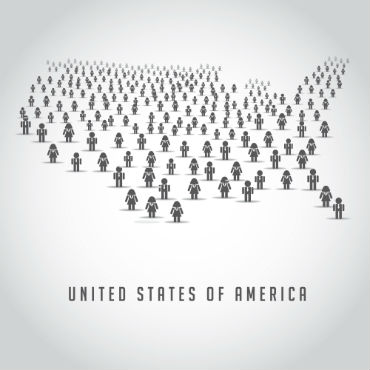Census Bureau changes course on key 2020 question

The move comes despite statistical research supporting an internal Census recommendation to combine two key questions to improve response rates.

The Census Bureau has opted to forego a small but significant change planned to population count survey questions that could have consequences on the accuracy of the 2020 census' count of racial and ethnic minorities.
Based on its own research, the Census Bureau recommended folding two questions on race and ethnicity into a single survey question. The bureau found that minority populations are more likely to respond to a single combined question.
In the 2000 and 2010 population counts, the Census Bureau asked two separate questions on race and ethnicity. Internal research found that the 2010 enumeration undercounted the Hispanic population by about 1.5 percent.
In addition to the Census Bureau's findings that the combined question led to more accurate data, the Pew Research Center found statistical evidence supporting the combined question.
"People were less likely to give no answer or an invalid answer when responding to the combined question than to the separate questions," Pew's report states.
As a result of that research, former Census Director John Thompson said that the plan for the 2018 test — as a precursor to the 2020 main event — was to combine the two questions into one with a drop-down menu that would allow respondents to check their specific country of origin.
"I know that because I submitted it," he said.
However, OMB has final say over the decision, and sources tell FCW that OMB is not supporting the combined question, leaving the bureau with no option but to stick with the two-question design.
"In order to ensure that the systems fielded in the 2018 end-to-end Census test are consistent with the design for the 2020 Census, the 2018 end-to-end Census test data collection operations will use the separate questions format," Census wrote in a document obtained by FCW.
OMB did not respond to FCW's request for comment. A Census spokesperson told FCW the decision on the questions will be addressed at its quarterly program management review Jan. 26.
The decision to go with the two separate questions "means they didn't listen to all the stakeholders," said Thompson.
The move also could have repercussions on decisions about federal funding and the makeup of Congress. The potential for an undercount of Latino residents could be impacted by the possibility of including a question on immigration status on the long-form questionnaire. In December, ProPublica reported the Department of Justice had formally requested Census add a citizenship question in order to protect "against racial discrimination in voting."
In traditionally blue states like California, New York and Illinois, where population growth is driven by immigration, but which are losing population when it comes to domestic migration, a substantial undercount could impact their congressional representation and electoral power.
"I think this is a blow to science," said Arturo Vargas, executive director of the National Association of Latino Elected and Appointed Officials. "OMB is ignoring the recommendation of expert demographers within the Census Bureau who had spent years of research to determine how to collect better race and ethnicity data from the American public."
Vargas added that when it came to which question would lead to better data, "it took [NALEO] years to arrive at that conclusion because we wanted to be convinced by the research that a combined question was better."
"I'm not saying it means less people will be collected," he noted. "I'm just saying we'll get the same kind of imprecise data the bureau's been collecting because of the flawed two-question approach....this is now changing all of the bureau's plans" regarding the questionnaire and data collection for the 2018 test and beyond."
The Census is also awaiting word on whether it will have funding to conduct tests and other activity in the run-up to the 2020 population count. Commerce Secretary Wilbur Ross asked Congress for a $187 million bump for fiscal year 2018. Currently the Census has an "anomaly" in the continuing resolution funding the government, which allows it to spend at an accelerated rate as if the supplemental funding was in the bag. If Congress doesn't appropriate that money, it could further impede progress on efforts on a bureau that has already suspended or combined some operations and is playing catch-up on IT systems development.
Clarification: This article was updated Jan. 25 to reflect reporting that the formal decision to continue with the two-part survey question was made internally at the Census Bureau.
NEXT STORY: GSA seeks industry input on shared services tech


